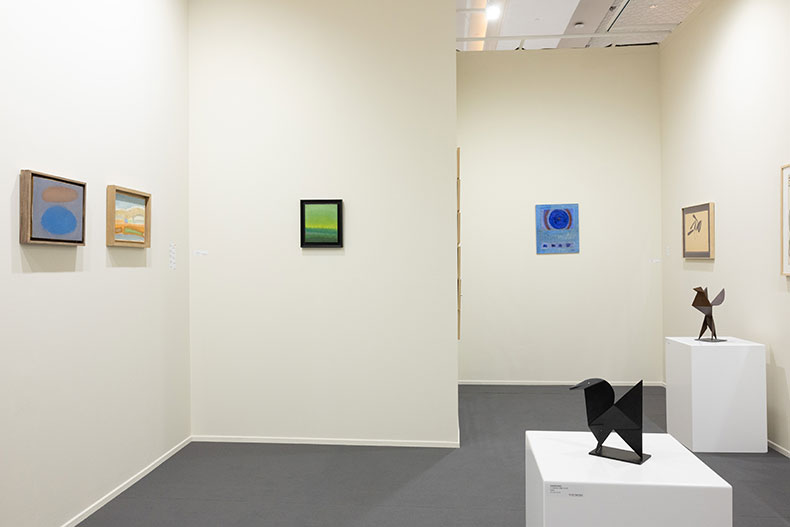Dubai, it is fair to say, has a reputation for the big, brash and shiny. It does not boast partnerships with internationally recognised museums, nor does it have the intellectual kudos of its neighbouring emirate, Sharjah, which is currently hosting its 15th biennial (until 11 June) with a theme conceived by the late Okwui Enwezor. What Dubai does have, however, and has had for the past 16 years, is Art Dubai.
Taking place annually in the Madinat Jumeirah conference centre, there is no doubt that this is a commercial art fair. At this year’s edition (1-5 March), the two great exhibition halls, one filled with contemporary work and the other with modern art, were connected by an installation by Guerlain showing the perfume house’s famous bee bottle. Lest anyone be mistaken that collaborations between the worlds of art and luxury are new, they are proudly displaying designs by Matisse and Yves Klein. The most recent interpretation is by the young Tunisian artist Mohamed Kilani Tbib, also known as Inkman.
Three Cheers for Rodchenko (1971/2015), Rasheed Araeen. Courtesy Aicon Gallery

And yet, for a fair whose eye is so clearly on commerce, there was a merciful absence of the typical artists from big Western fairs. Instead, the focus was on artists from the surrounding region and South Asia. The fair’s artistic director, Pablo del Val, boasted that this edition of the fair ‘had the highest percentage of artists from the Global South’ in its history.
Perhaps surprisingly, given Dubai’s obsession with the contemporary and nowness, one of the strongest sections of the fair reached into the past. The modern section, organised by the Paris-based curator Mouna Mekouar and the Italian art historian Lorenzo Giusti, featured a number of memorable shows, with galleries from Dubai, Beirut, New Delhi, Ramallah, London and New York presenting booths dedicated to a single artist. Walking from booth to booth, you had a sense of rediscovering forgotten artists – as well as lost works. Among the highlights was an installation piece titled Three Cheers for Rodchenko by Rasheed Araeen (b. 1935) at Aicon gallery. Araeen is not a little-known artist (an impressive 35-metre-high sculpture by the artist forms a focal point of the Aga Khan Centre in London), yet this particular work came with an intriguing story. It was originally produced in 1971, but then disappeared from view after being unintentionally destroyed. The version at Art Dubai was a recreation of the original, executed in 2015. For an artist who has explored destruction through his performance pieces Burning Bicycle Tyres (1959) and Burning Ties (1976–79) it felt curiously appropriate.
Mark Hachem’s booth at Art Dubai with paintings by Helen Khal. Photo: Spark Media for Art Dubai

Mark Hachem’s booth, meanwhile, presented a confident and intriguing selection of works by Helen Khal (1923–2009). Raised by Lebanese parents in Pennsylvania, Khal later moved to Beirut where she worked as a critic and an artist. The paintings on display here were drawn from the later part of the artist’s career, showing a dedication to modernism with abstracted floating shapes in the colours of the Mediterranean, that seemed to reflect a broad range of cultural and artistic influences. Nearby, at the booth of Gallery One from Ramallah, was a collection of drawings of a Syrian village by Samir Salameh (1943–2018), that showed a control of form and attention to detail that stood out against some of the brasher fair company.
While London and New York obsess over diversity, Dubai has no need to. It has long been gathering artists that the art world of the West might not know and in so doing shows that there is a point to art fairs that goes beyond mere commerce. It’s not every day that people say this about Dubai.
Gallery One’s booth with works by Samir Salameh. Photo: Spark Media for Art Dubai

Art Dubai took place from 1 to 5 March. For more information, visit: artdubai.ae



